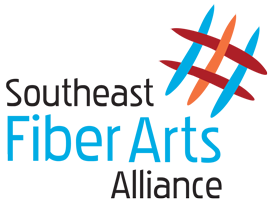Collage
bleeding heart (detail) by Helen Ensign
Collage is both a technique and the art it produces - a way of creating something new by affixing different materials onto a surface. (When the technique is applied in three dimensions, the result is called an assemblage.) Typically, a collage or assemblage incorporates at least 50% affixed materials, setting it apart from a mixed-media painting or other art form.
Artists have been mixing materials for centuries, but the word collage didn’t appear until the early 1900s, when Georges Braque and Pablo Picasso began adding bits of newspaper, wallpaper, and fabric to their paintings. By blurring the boundary between painting and object, they opened the door to modern collage. Part of the broader mixed-media family, collage connects physical materials with visual culture, inviting us to see the familiar in unexpected ways.
Materials and Tools:
- Adhesives include glue sticks, craft glue, gel medium (used to adhere and to seal), spray adhesive, and tape.
- Application tools include brushes, brayers or rollers, and tweezers.
- If you can attach it, it is collage material. Newspapers, magazines, maps, sheet music, photos, postcards, stamps, tickets, labels, packaging, fabric scraps, lace, ribbon, plant materials, and found and upcycled objects are all fair game.
- Cutting tools include scissors, craft knives, rotary cutters, and cutting mats.
- Mark-making tools include pens, pencils, markers, stamps, stencils, and paints.
- The substrate or foundation for a collage can be a journal/sketchbook, cardstock, watercolor paper, canvas board, or wood panels.
Terminology:
- Altered Art: Taking an existing object (book, postcard, etc.) and changing it through collage and other techniques.
- Cut-Outs: Shapes or images cut from other sources and used as collage elements.
- Creating Texture: Using materials, from glue to tape to paper, to add texture and dimension.
- Décollage: Creating by tearing, cutting, or removing layers from an existing surface (the opposite of collage’s “building up”).
- Ephemera: Printed or written materials originally meant to be temporary (tickets, postcards, labels.
- Found Objects: Everyday items incorporated into a collage or assemblage.
- Layering: Placing multiple elements on top of each other to create depth and texture.
- Mixed Media: Combining two or more art techniques in one work (collage is a type).
- Replacing or Revealing: Cutting/tearing away a part of an image and replacing it with something else, or revealing an image beneath.
- Transfer:
Moving an image from one surface to another (often using gel medium or solvents).
Process:
Cut or tear interresting images, words, textures, colors, and shapes from your gathered materials and arrange them on your chosen substrate before glueing everything down. Optionally, add finishing touches including embellishments, sealant, and display hardware.
Variations:
- Digital Collages are created using image-editing software instead of physical materials.
- Fabric/Textile Collages are compositions of layered and stitched fabric, lace, or fiber scraps.
- Mosaic Collages use many small pieces to form a larger image.
- Paper Collages use cut or torn paper as the primary medium.
- Photo Collages or Photomontages use photographs as the primary medium.
Beginner Project Ideas:
FAQ's:
- Do I need to know how to draw or paint to collage? No! One of the best things about collage is that it’s accessible to all skill levels. You can create powerful and expressive pieces without traditional drawing skills.
- What kind of glue should I use?
- For paper: glue sticks or liquid glue.
- For heavier materials, use acid-free gel or matte medium, such as Yes! Paste and LINECO Neutral pH Adhesive.
- For fabric or objects: tacky glue or hot glue.
- How do I keep my collage from wrinkling? Use a thin, even layer of glue and press materials gently from the center outward. Use a roller or card to smooth surfaces and avoid excess moisture.
- Can I mix collage with other art forms? Yes! That’s called mixed media. You can combine collage with painting, drawing, printmaking, sewing, or stamping.
- Is collage a fiber art form? Yes, when the main materials used include fabric, thread, or other fiber-based components.
- Is collage considered "real" art? Absolutely. Collage is a respected art form used by legendary artists like Pablo Picasso, Hannah Höch, and Romare Bearden - it’s just as expressive and valid as any other medium.
Books and Magazines:
- The Collage Ideas Book by Allanah Moore
- Collage Techniques: A Guide for Artists and Illustrators by Gerald Brommer
- Contemporary Collage Magazine
- Kolaj Magazine
- Textile Collage: Using Collage Techniques In Textile Art by Mandy Pattullo
- The Age of Collage Vol. 2: Contemporary Collage in Modern Art by Dennis Busch and Robert Klanten, editors
